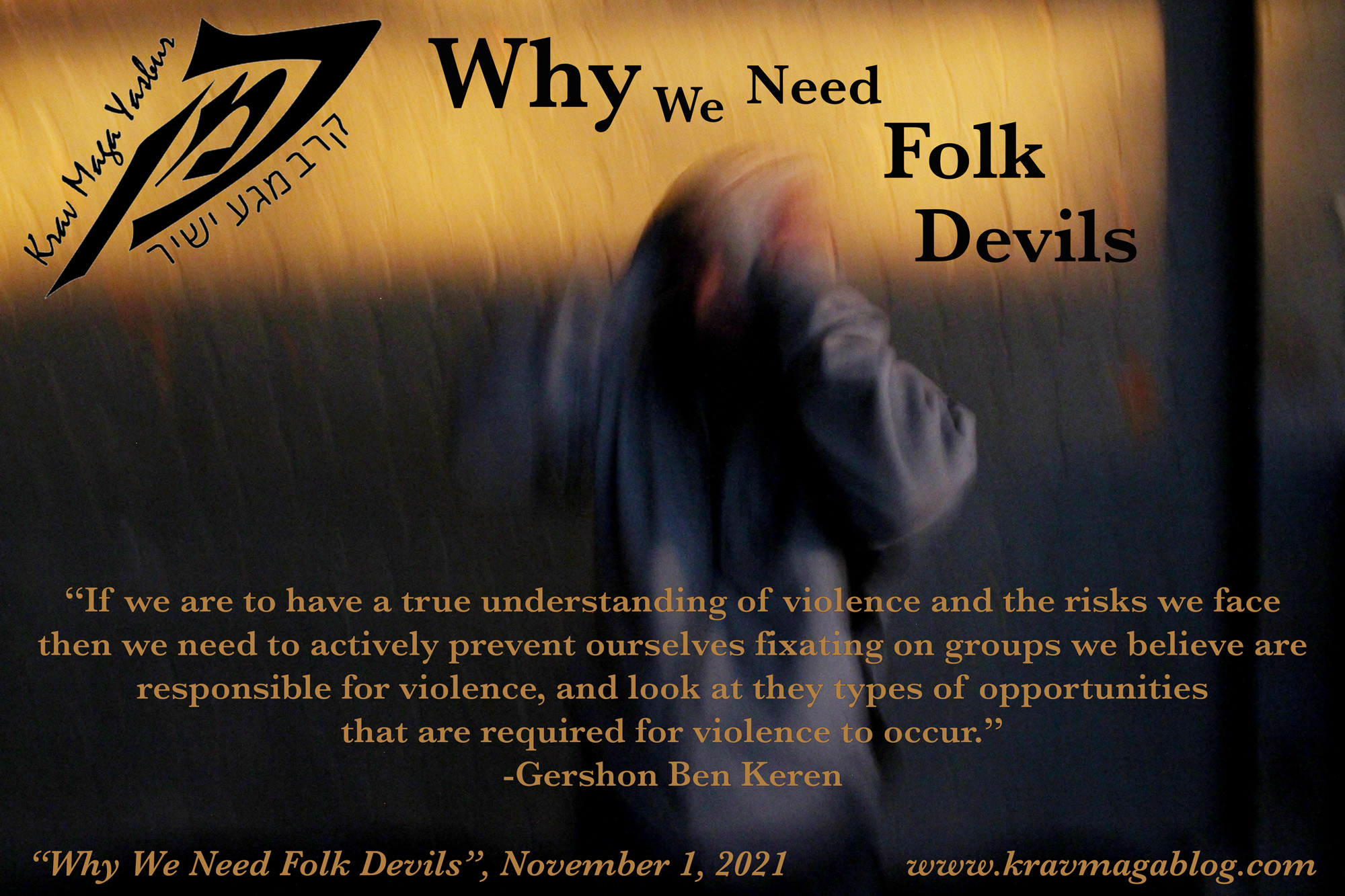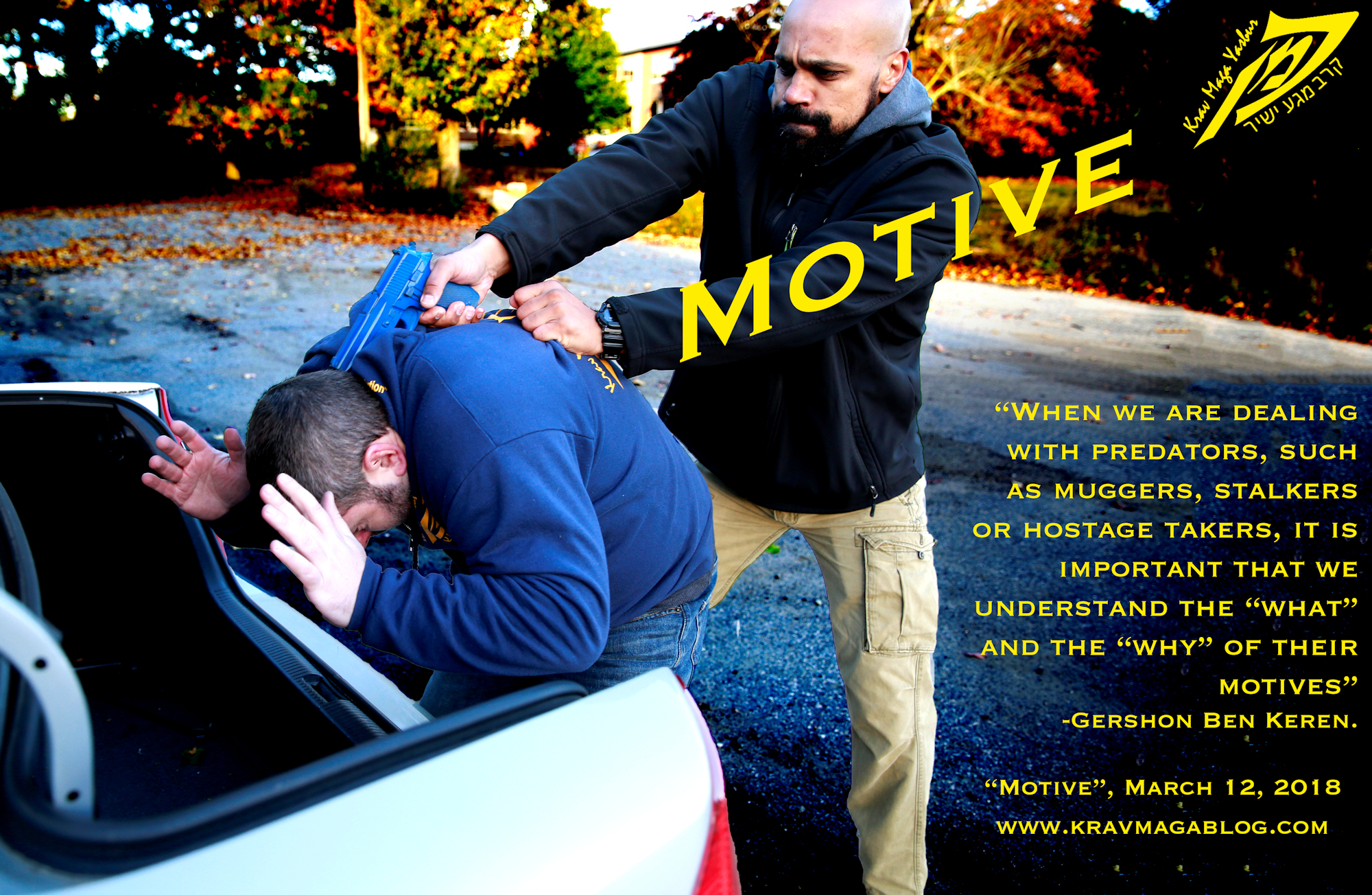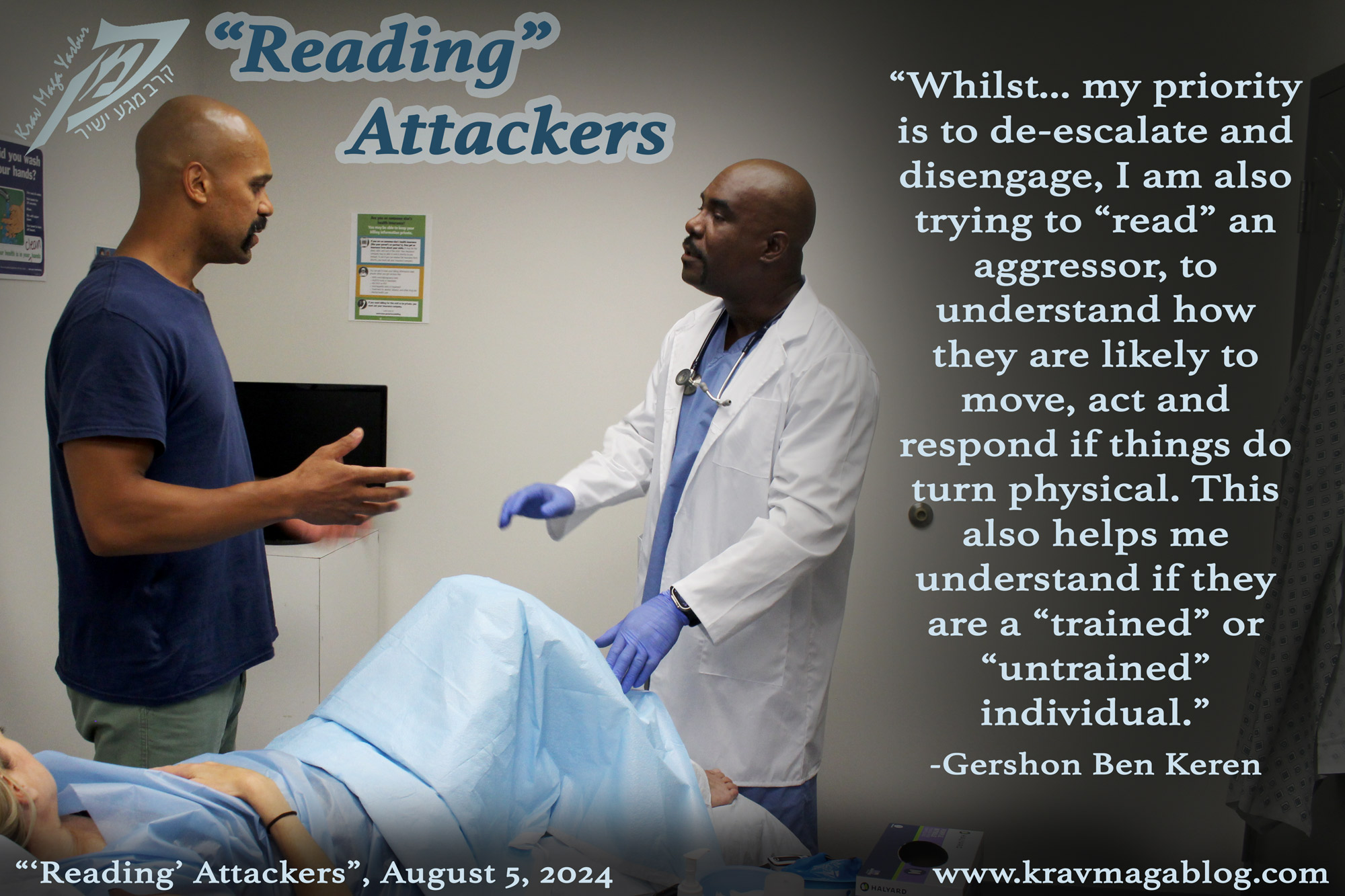Reading Attackers, is an article written by Gershon Ben Keren, a 5th Degree Black Belt in Krav Maga, who teaches Krav Maga in Boston, MA. He has also authored three Amazon best-Selling Books on Krav Maga.
Most of the violent incidents that we are training to deal with are the result of “bad” social interactions e.g. arguments and disputes with strangers that turn physical. Whilst there are those who may imagine that they will be targeted by “Bourne Supremacy” style assassins, be glad/thankful that the person you are most likely to be dealing with is an angry/emotional, untrained and unexperienced individual, who may feel and believe that they have to fight, with their “rational” sense telling them that they don’t want to. This doesn’t mean that we shouldn’t learn how to handle and deal with committed and experienced aggressors – because they are out there – but rather we should recognize what our realities are, and what they are likely to be e.g., as I’ve gotten older I spend less of my time in public spaces, such as bars and clubs, and the most likely place that I’m going to interact with strangers is at Target, when I’m getting groceries. I lead a boring and mundane lifestyle, which I’m quite happy with, which sees me interact with very few strangers in public spaces; this is my reality. Because of this I understand that the most likely physical situations – but not exclusively - I am probably going to face, are those that result from verbal interactions that escalate. This means that most of the violence I will have to deal with, which even to start with is statistically unlikely, will start face-to-face, with an aggressor who is in front of me. Whilst, in such situations my priority is to de-escalate and disengage, I am also trying to “read” an aggressor, to understand how they are likely to move, act and respond if things do turn physical. This also helps me understand if they are a “trained” or “untrained” individual.
One of the first things I’m checking/reading, is whether the person/aggressor being dealt with is in control of their movements. If someone is physically out of control, flailing their arms about, jutting their chin forward etc., then however skilled and disciplined a fighter they may be in other environments, and at other times, they are not in this moment. This doesn’t mean that they aren’t a threat or danger but rather that I’m expecting a large and wild attack, rather than something which is tight and controlled e.g., they are more likely to swing in with a big, over-committed punch, than a tight and difficult to detect jab etc. I also know that if they are acting in a physically uncontrolled manner, they are probably expending a lot of energy whilst in this emotional and adrenalized state; this means that their body will be going into a state of “recovery” fairly quickly if the confrontation does escalate to a physical one. Whilst it is preferable to have to work against an exhausted aggressor, their tiredness and fatigue can create its own problems e.g., when exhausted an aggressor may want to hold onto you for support, and prevent you from gaining the range and distance that would allow you to throw a greater variety of strikes and punches that would in all likelihood contain more power and be harder to defend against. This can make disengagement from the incident difficult, as an aggressor won’t want to let go of you. This can create other problems if they “remember” they have a weapon and/or now feel the need to draw it. Trying to defend against a knife at this close proximity is extremely difficult. One of the things we should train to be able to do, is to extricate ourselves when someone wants to simply “dance” with us i.e., someone who holds on to us and will not let go of us. This is different to training how to deal with a skilled opponent who knows how to work and operate in the clinch.
One of the other things I’m looking for is to see whether the other person is relaxed or tense, and where that tension is located. Someone whose body is relaxed suggests that they have been here before and are at the least relatively comfortable with the situation. If someone’s body is tense it suggests that they aren’t familiar with or haven’t experienced these types of events. Staying relaxed in a fight is something that has to be trained and actively done. Many people hold their breath when involved in a confrontation. Often this is done as an involuntary means of stabilizing the core by increasing intra-abdominal pressure. Weight-lifters do this consciously via the Valsalva maneuver to ensure that their body is “strong” for the lift. So, there are benefits to a person who holds their breath when engaged in extreme physical activity, however there are also down sides e.g., “new” air is not getting into the lungs to supply the muscles with oxygen. I have seen - and been involved in - physical altercations, where an attacker throws a couple of big punches and then clinches with their target, as they gulp in air, to make up for this deficit. As previously stated, such assailants can be hard to break away from, as they know in their exhausted state, they have little energy to draw upon to continue the fight e.g., going back to moving, and trading punches etc. During a fight you should be “reading” your attacker.
Feints can also be used to “read” an attacker, rather than just to set up striking/punching combinations. Often feints are seen as a means of distracting an assailant by drawing their attention to something and then changing the attack, in order to increase the chances of the strike/punch/attack landing etc. However, feints can also be used to provoke a response that can be “read”, and the information gathered used to influence the way in which to make future/further attacks. If when you make a sharp movement by stepping forward your attacker flinches, it is likely that they are nervous and hesitant. You may want to confirm this by quickly dipping your rear shoulder and knee to make it look like you’re about to throw a punch etc. You now know how this individual reacts to such movements and then use them as “feints” to set up other attacks. It may be that when you take a step forward the individual you are dealing with overcompensates with a large step away; this may inform you that they are overly defensively minded, and aren’t wanting to control range in order to launch their own attack etc.
Everything an attacker does contains information that can be used e.g., if they swing in a wild, fully-committed punch, that is designed to take your head from your shoulders, it is likely that this is the sum-total of their plan; if this doesn’t work, they have few other ideas about how to “win” the fight. Whilst such a strike/punch does contain a real danger because if it lands it will contain a significant amount of concussive force etc., it also suggests that this was your assailant’s best shot. Learning to “read” a person both before and during a physical confrontation can inform the approach that you take in dealing with them.
0 COMMENTS















